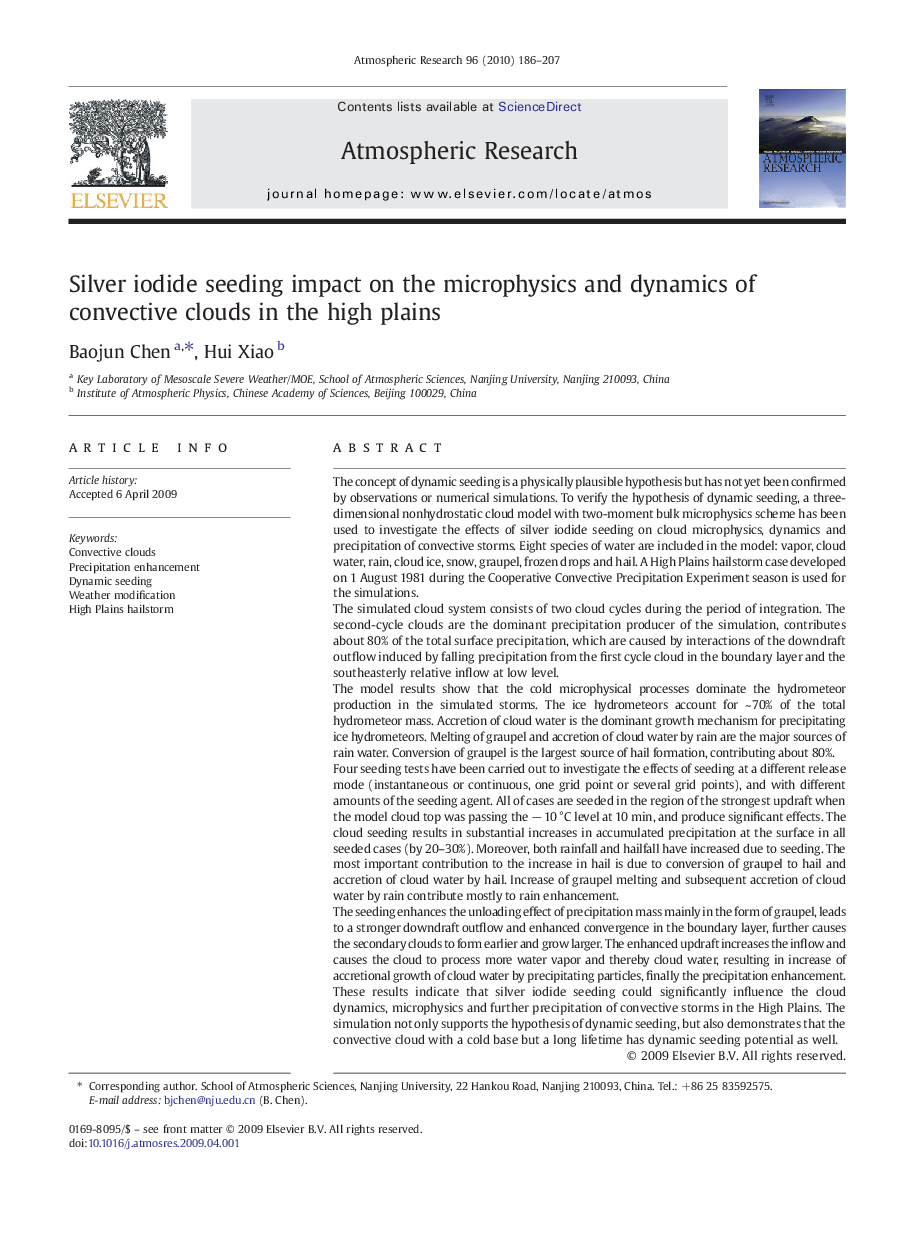| کد مقاله | کد نشریه | سال انتشار | مقاله انگلیسی | نسخه تمام متن |
|---|---|---|---|---|
| 4450669 | 1620567 | 2010 | 22 صفحه PDF | دانلود رایگان |

The concept of dynamic seeding is a physically plausible hypothesis but has not yet been confirmed by observations or numerical simulations. To verify the hypothesis of dynamic seeding, a three-dimensional nonhydrostatic cloud model with two-moment bulk microphysics scheme has been used to investigate the effects of silver iodide seeding on cloud microphysics, dynamics and precipitation of convective storms. Eight species of water are included in the model: vapor, cloud water, rain, cloud ice, snow, graupel, frozen drops and hail. A High Plains hailstorm case developed on 1 August 1981 during the Cooperative Convective Precipitation Experiment season is used for the simulations.The simulated cloud system consists of two cloud cycles during the period of integration. The second-cycle clouds are the dominant precipitation producer of the simulation, contributes about 80% of the total surface precipitation, which are caused by interactions of the downdraft outflow induced by falling precipitation from the first cycle cloud in the boundary layer and the southeasterly relative inflow at low level.The model results show that the cold microphysical processes dominate the hydrometeor production in the simulated storms. The ice hydrometeors account for ~ 70% of the total hydrometeor mass. Accretion of cloud water is the dominant growth mechanism for precipitating ice hydrometeors. Melting of graupel and accretion of cloud water by rain are the major sources of rain water. Conversion of graupel is the largest source of hail formation, contributing about 80%.Four seeding tests have been carried out to investigate the effects of seeding at a different release mode (instantaneous or continuous, one grid point or several grid points), and with different amounts of the seeding agent. All of cases are seeded in the region of the strongest updraft when the model cloud top was passing the − 10 °C level at 10 min, and produce significant effects. The cloud seeding results in substantial increases in accumulated precipitation at the surface in all seeded cases (by 20–30%). Moreover, both rainfall and hailfall have increased due to seeding. The most important contribution to the increase in hail is due to conversion of graupel to hail and accretion of cloud water by hail. Increase of graupel melting and subsequent accretion of cloud water by rain contribute mostly to rain enhancement.The seeding enhances the unloading effect of precipitation mass mainly in the form of graupel, leads to a stronger downdraft outflow and enhanced convergence in the boundary layer, further causes the secondary clouds to form earlier and grow larger. The enhanced updraft increases the inflow and causes the cloud to process more water vapor and thereby cloud water, resulting in increase of accretional growth of cloud water by precipitating particles, finally the precipitation enhancement.These results indicate that silver iodide seeding could significantly influence the cloud dynamics, microphysics and further precipitation of convective storms in the High Plains. The simulation not only supports the hypothesis of dynamic seeding, but also demonstrates that the convective cloud with a cold base but a long lifetime has dynamic seeding potential as well.
Journal: Atmospheric Research - Volume 96, Issues 2–3, May 2010, Pages 186–207